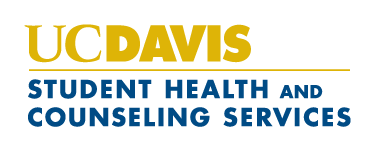What Is an Internal Condom?
The internal condom is a barrier method that reduces the risk of STI/HIV transmission during vaginal and anal sex, as well as when using insertive sex toys. It also helps reduce the risk of pregnancy – check out Bedsider.org to learn more about using internal condoms as a birth control method.
Internal condoms are made of nitrile, which is a soft type of non-latex rubber. They are also coated with silicone-based lubricant.
Where Can You Get Internal Condoms?
- All registered UC Davis students can visit the Love Lab for no-cost safer sex products. Non-latex options are available!
- Check out the UC Davis Sexcess Map to find sexual health resources on and around campus.
How to Use an Internal Condom
Watch this demo video from the Love Lab, made by and for students!
Internal condoms can be inserted into the vagina or anus for up to 8 hours before sex. We recommend inserting it at least 30 minutes before sexual activity so that it can warm up to body temperature and feel more natural. Never use an external and internal condom at the same time!
Steps:
- Establish consent! Sexual activity without consent is sexual assault.
- Check the expiration date on the side of the package.
- Check for any damage to the packaging.
- Push condom to the side and tear package from corner.
- Make sure the condom is not twisted.
- Insert condom:
- For vaginal sex: Pinch inner ring and insert into the vagina. It will be secured by the pubic bone. Leave an inch of the condom hanging outside of the vagina.
- For anal sex: Remove the inner ring and insert into anus. It will be secured by the sphincter. Leave an inch of the condom hanging outside of the anus.
- Enjoy! Communicate with your partner(s) throughout the entire act, and remember that consent must be ongoing.
- For people with a clitoris, the other ring might provide stimulation
- Use water-based or silicone-based lubricants to increase pleasure.
- After use, twist the condom to prevent leaks, and gently pull condom out of vagina or anus
- Wrap condom in tissue and throw in trash – do not flush or re-use!
What If the Internal Condom Breaks?
SHCS’ Advice Nurse services are available to help you make informed decisions about your medical and/or mental health situation, and are offered to all registered UC Davis students at no charge. Call 530-752-2349 during normal hours of operation to schedule a telephone appointment. When SHCS is closed, call 530-752-2349 and follow the prompts to speak with the Advice Nurse directly.
Pregnancy Prevention:
- Emergency Contraception (EC) must be taken as soon as possible after sex to be most effective.
- Over-the-Counter (OTC) EC
- Its effectiveness decreases each day, and must be taken within 5 days.
- You can purchase OTC EC at the SHCS Pharmacy for $35. With a prescription, your insurance will cover the cost of OTC EC.
- The Wellness To Go Vending Machine located inside the ARC Study Lounge also sells OTC EC (cash-only).
- Check out the UC Davis Sexcess Map to find sexual health resources on and off campus.
- Prescription EC
- If you weigh more than 165 pounds, prescription EC may be a more effective option for you. Talk to your healthcare provider.
- Prescription EC must be taken within 5 days. It is equally as effective on the first day after sex as it is on the fifth day after sex, but we recommend taking it as soon as possible.
- Copper IUD
- Must be inserted by a healthcare provider within 5 days after sex. It is equally as effective on the fifth day after sex as it is the first day after sex.
HIV Prevention:
- PEP (post-exposure prophylaxis) an emergency medicine that can reduce your chance of getting HIV after being exposed to HIV. It must be taken as soon as possible – but within 72 hours. Its effectiveness rapidly decreases over time, so go to the nearest emergency room or healthcare facility as soon as possible if you think you were exposed to HIV.
- Medical providers at SHCS can prescribe PEP. Call 530-752-2349 to make a telephone appointment with the Advice Nurse and discuss your options for same-day care, which may include going to the nearest healthcare facility.
- Check out this page to learn about getting help in Davis when SHCS is closed.
